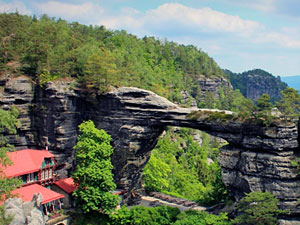
Teplice Open 2015 – impressions and reminiscence
Report from the Czech Republic by Sagar Shah
As we reported in Part I of our article on the Teplice Open, the event was won by the Icelandic GM Hannes Stefansson after he edged out his rival Evgeny Postny on the tie-breaks. The third place was taken by the Russian GM Alexander Rakhmanov.

The top three prize winners of the tournament: (from left) Stefansson, Postny and Rakhmanov

GM Sipke Ernst of the Netherlands finished fourth

Top seed Sergei Movsesian had to settle for the fifth spot
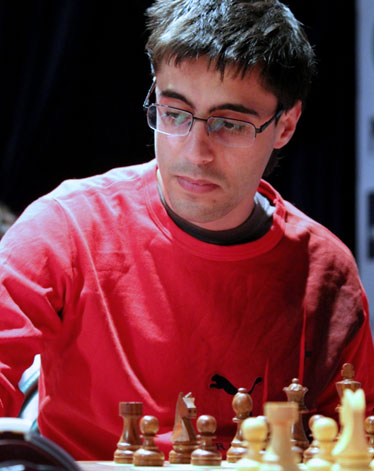
Sixth: GM Tamir Nabaty from Israel
The battle between the two above players who finished fourth and sixth had a very nice finish. Here is the position:

Ernst-Nabaty, fourth round, White to play.
The cold-blooded engines say that White is winning in this position after 61.Qc4. But after many ups and downs, Ernst decided to end the game with 61.Qb8+! The reason for the exclamation is not because it is a good move but it is not every day that you see a stalemate with so many pieces remaining on the board. As soon as the queen was placed on the b8 square both players began to laugh and shook their hands agreeing to a draw!

An unusual stalemate brings smiles even on the faces of the best players
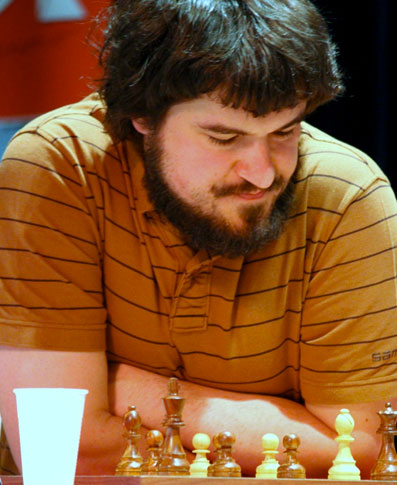
The best player from the Czech Republic, Jiri Stocek, finished seventh
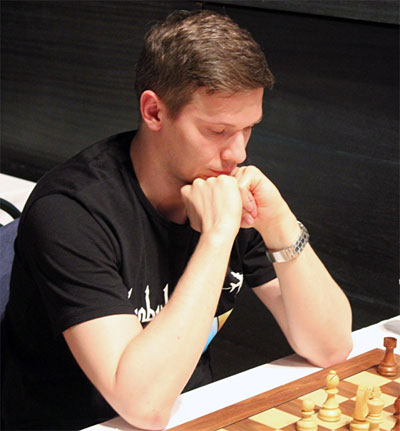
Eighth: GM Bartlomiej Heberla from Poland

IM Pawel Weichhold from Poland played a wonderful tournament, but missed out
on his GM norm due to a last round defeat against Hannes Stefansson
Top Final Ranking (after nine rounds)
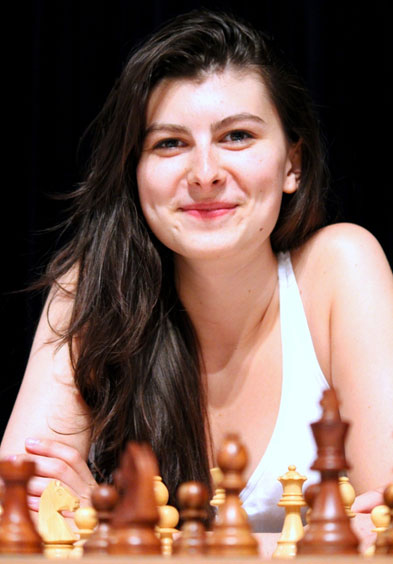
WIM Bianka Havanecz from Hungary was the
best female player in the event. She scored 5.5/9.
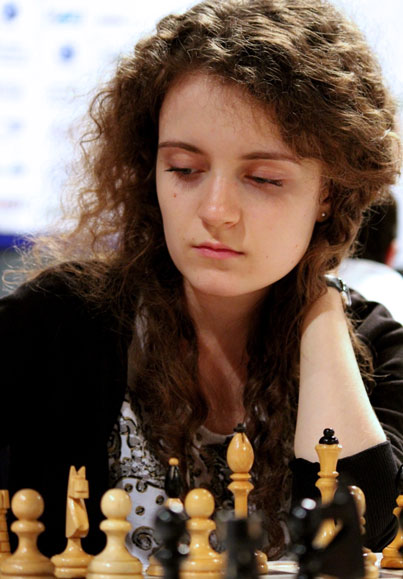
Second best woman player: Mariola Wozniak from Poland
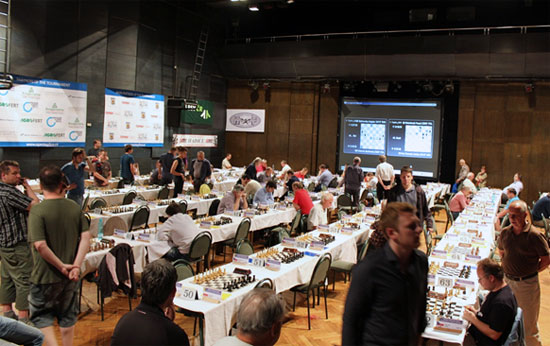
The playing hall was slightly cramped and lacked ventilation…

… but it was very comfortable for the top four boards who played on the podium.

Also there were drinks and refreshments available for all the players free of charge
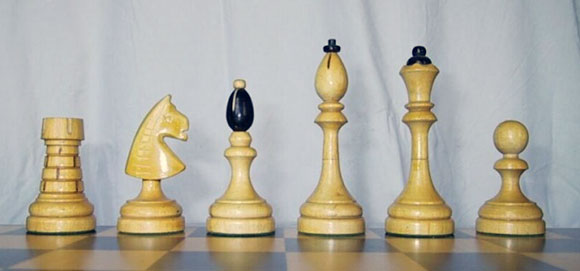
It was the first time in my life that I did not play with a Staunton chess set. The main difference here is with the king. As you can see it looks like an oversized bishop. Sometimes when you are not used to such chess pieces, it can create problems and confusion.

The very talented ten-year-old Ieysaa Bin-Suhayl (1894, 4.0/9) with his mother
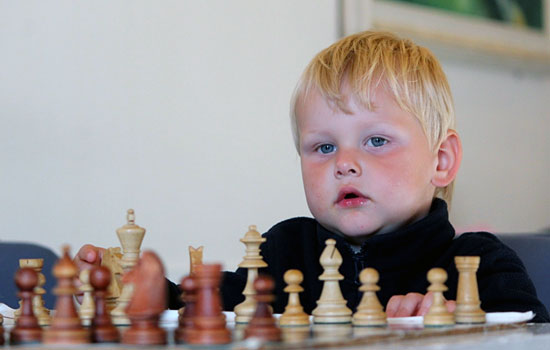
Second IM norm for... no, just kidding. But they just keep getting younger!

Teplice is a small and quiet town with some beautiful cafes

The cobbled street and flowers create a very nice atmosphere
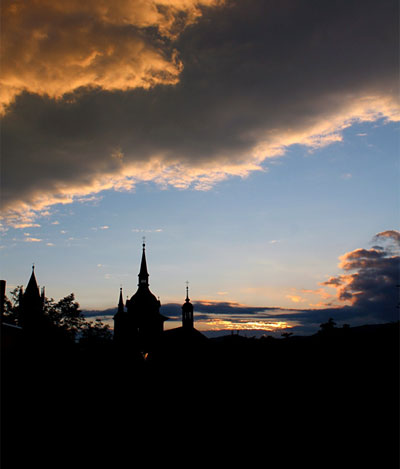
A picturesque sunset that we witnessed from the balcony of our room
The Teplice Open is a nicely organized event by Mr. Pavel Kirs and his team which gives you an opportunity to visit a beautiful town with a rich chess history. If you do plan to play in Teplice 2016, do not miss the majestic Pravcicka gate.
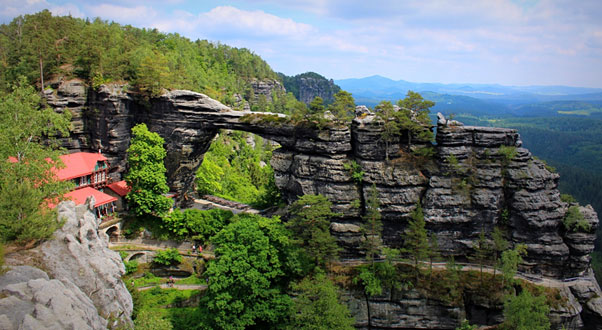
The Pravčická Brána (Pravcicka Gate) is the largest natural sandstone arch in Europe. With a span of 26.5 metres, an inside height of 16 metres the arch it is one of the most striking natural monuments in the Elbe Sandstone Mountains.
The city of Hrensko is the starting point for the trek to Pravcicka gate and Hrensko is just
60 kilometres from Teplice. In order to reach the Pravcicka Gate you have to ...
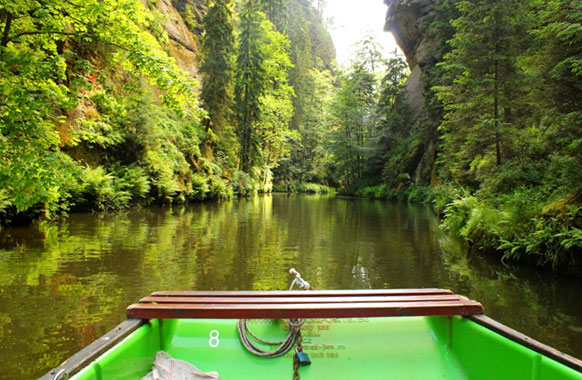
... trek for nearly five hours through beautiful natural trails in the dense forest and take boat rides like this!
Pictures by Amruta Mokal
Official tournament website
Looking back – a Tartakower brilliancy
Before taking your leave, I would like to show you one of the games from the 1922 Schachkongress held in Teplice in 1922. Fourteen European chess masters were invited to participate in the round robin event. Despite the absence of World Champion José Capablanca, former champ Emanuel Lasker, and Alexander Alekhine, the tournament was extremely strong, thanks to the participation great masters like Akiba Rubinstein, Siegbert Tarrasch, Rudolph Spielmann, and Savielly Tartakower. Representing Czechoslovakia were Richard Réti and Karel Treybal. Reti, the hyper-modernist, and Spielmann, the romanticist, tied for first place, each with nine points out of 13 rounds. The tournament achieved attention through its seven brilliancy prize games of amazing artistic and technical skill.
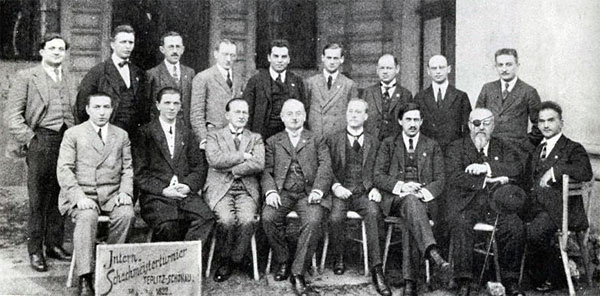
The participants of the Teplitz-Schönau 1922. Standing from left: 1. Borislav Kostic, 2. Paul Johner,3. Karel Treybal, 4. Ernst Grünfeld, 5. Richard Réti, 6. Friedrich Sämisch, 7. Rudolf Spielmann, 8. Saviely Tartakower 9. Not known. Sitting from left: 1. Akiba Rubinstein, 2. Geza Maroczy, 3. Siegbert Tarrasch, 4. Not known, 5. Jacques Mieses, 6. Heinrich Wolf, 7. Richard Teichman, 8. Not known.
There were seven games in this tournament that received a brilliancy prize, but I think the game between Maroczy and Tartakower was the most impressive one.
Maroczy – Tartakower, 1922
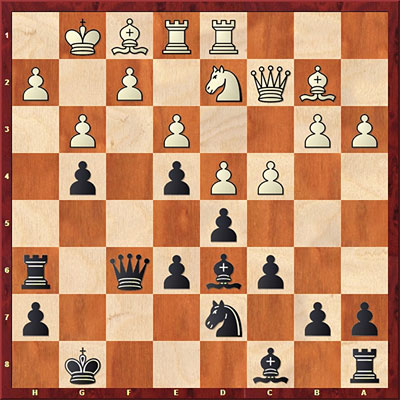
Black to play – what would you do?
Please take around ten minutes to think over this position and then play through the game in our Javascript board below, to understand how Black should continue. Really, look at it before you peek at the solution.

Master of the attack – Savielly Tartakower

[Event "Teplitz Schoenau"] [Site "Teplitz Schoenau"] [Date "1922.10.05"] [Round "4"] [White "Maroczy, Geza"] [Black "Tartakower, Saviely"] [Result "0-1"] [ECO "A85"] [Annotator "Sagar Shah"] [PlyCount "70"] [EventDate "1922.10.02"] [EventRounds "13"] [EventCountry "CSR"] [Source "ChessBase"] [SourceDate "1999.07.01"] 1. d4 e6 2. c4 f5 3. Nc3 Nf6 4. a3 Be7 5. e3 O-O 6. Bd3 d5 7. Nf3 c6 8. O-O Ne4 9. Qc2 Bd6 10. b3 Nd7 11. Bb2 Rf6 12. Rfe1 Rh6 13. g3 Qf6 14. Bf1 g5 15. Rad1 g4 16. Nxe4 fxe4 17. Nd2 {The fireworks begin from this point onwards. The beautiful thing about the following sacrifice is that it was intuitively made by Tartakower. It is impossible to calculate right to the end.} Rxh2 $1 18. Kxh2 Qxf2+ 19. Kh1 (19. Bg2 Nf6 $1 20. Rc1 {making space for the king on d1 might well be the best option.} (20. Rf1 $2 Qxg3+ 21. Kg1 Qh2+ 22. Kf2 Bg3+ 23. Ke2 Qxg2+ 24. Rf2 Qxf2#) 20... Qxg3+ 21. Kg1 Qh2+ 22. Kf1 Nh5 $1 $19 {The knight enters the attack and Black has a decisive advantage.}) 19... Nf6 $1 { The queen on f2 is irritatingly placed. Tartakower finds it the perfect time to include more pieces into the attack.} (19... Bxg3 $2 20. Re2 $18) (19... Qxg3 $6 20. Nb1 $1 $14 {[%cal Gc2g2]}) 20. Re2 {This is definitely the most natural and the best defensive move available in the position.} Qxg3 {Black is a rook down and has three pawns to compensate for it. But his pieces are working together. The queen on g3 is a monster and the bishop on d6 and knight on f6 are backing it up. And as Garry Kasparov has said, even a pawn is a unit of attack, so we cannot discount the g4 pawn.} 21. Nb1 {This looks like the most natural move, clearing the second rank for the white queen to join the defence.} (21. Rg2 $2 Qh3+ 22. Kg1 Qxe3+ 23. Kh1 Qh3+ 24. Kg1 Bf4 $17) 21... Nh5 (21... Qh4+ 22. Kg1 g3 23. Rg2 Ng4 24. Qe2 Bd7 $19 {followed by Rf8 will end the game. Look at how all the white pieces are completely tied up.}) 22. Qd2 (22. Rh2 Qf3+ 23. Bg2 Ng3+ 24. Kg1 Ne2+ 25. Kh1 Qf2 $19) 22... Bd7 $1 { Tartakower's play is a perfect example of attacking play. He invites everyone to the party.} 23. Rf2 Qh4+ 24. Kg1 Bg3 25. Bc3 (25. Rg2 {might have been possible but Black can bring his last piece into the attack.} Rf8 26. Nc3 Bc7 { clearing the g3 square for the knight.} 27. Ne2 (27. Be2 $2 Ng3 $1 28. Rh2 Nxe2+ 29. Qxe2 Bxh2+ 30. Qxh2 Qxh2+ 31. Kxh2 Rf2+ $19) 27... Rf3 $1 $19) 25... Bxf2+ 26. Qxf2 g3 27. Qg2 Rf8 {Black is now only a down a piece and already has three pawns for it. Besides the knight on b1 is completely out of the game. We can conclude that this is a completely winning position for the second player.} 28. Be1 Rxf1+ $1 {Tartakower sacrifices material with great ease in this game.} (28... e5 $1 {would have been faster.}) 29. Kxf1 e5 30. Kg1 Bg4 $1 {Attacking the d1 rook and also threatening Bf3.} 31. Bxg3 Nxg3 32. Re1 Nf5 $1 (32... Bf3 $2 33. Qh2 $15) 33. Qf2 Qg5 34. dxe5 Bf3+ 35. Kf1 Ng3+ {A mesmerisingly beautiful attack by Tartakower. He could intuitively feel that his attack was decisive even though there was no clear path to victory. He brought all his pieces into the attack with great patience and finished off the game to perfection. No wonder this game received a brilliancy prize.} ( 35... Ng3+ 36. Kg1 Nh1+ $19) 0-1
